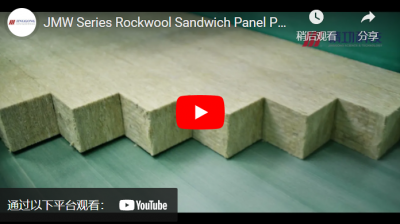What Are the Differences Between PU and PIR Sandwich Panel?
PU sandwich panel and PIR sandwich panel are both sandwich panels and important products of the sandwich panel production line. So what are the characteristics of these two different sandwich panels? What's the difference between them?
PIR foam and PUR polyurethane foam are two completely different thermal insulation materials, but since they have the same or similar reaction groups, that is, the raw materials used are the same or similar, they are called sister products. PIR is called polyisocyanurate acid-modified polyurethane. It is made of polyurethane foam modified by polyisocyanurate acid. It has a great difference in performance between polyisocyanurate and polyurethane. However, due to the fact that there are few factories that control PIR technology, the two kinds of foams are fundamentally indistinguishable in shape. Many people mistake that PIR is also polyurethane foam. In fact, there is a big difference between the two. The full name of PIR, "polyisocyanurate acid-modified polyurethane", is too long to memorize, so we usually call it PIR foam or polyurethane PIR foam, and call it the regular polyurethane foam polyurethane PUR foam (or PU foam) to show the difference.
1. What is a PU sandwich panel?
PU sandwich panel, also known as polyurethane sandwich panel, polyurethane composite panel and polyurethane energy-saving panel, the product of the sandwich panel lines, is the polyurethane insulation sandwich panel for building. The product is a double-layer colour steel plate with polyurethane rigid foam as an insulation layer. It is usually used in the wall and roof enclosure system of industrial plants, logistics storage and integrated houses.
As a professional supplier in China, Jinggong offers PU sandwich panel production lines and rock wool sandwich panel production lines, contact us if you need them!
2. What is a PIR sandwich panel?
PIR sandwich panel, the product of PIR sandwich panel also known as polyisocyanate sandwich panel, is a foaming material made by reaction of isocyanate with polyether after the catalyst. Its physical and fire resistance are better than those of general polyurethane. It is an ideal organic low-temperature insulation material, which has small thermal conductivity, light shockproof and strong adaptability. It is widely used in oil refineries, chemical plants, ethylene, chemical fertilizer, cold storage and the construction industry.
3. The differences between PU and PIR sandwich panel
(1) Difference in fire resistance:
PU foam: generally B3 grade, by adding flame retardants, it can reach B2 grade.
PIR foam: generally B2 grade, by adjusting the concentration of polyisocyanurate acid ring and other formula technology, it can reach the B1 level, and the oxygen index can reach more than 35%.
(2) Difference in thermal insulation properties:
PU foam: the thermal conductivity is generally 0.022 to 0.026 W/mK (25 degrees Celsius).
PIR foam: thermal conductivity can be as low as 0.018 W/mK (25 degrees Celsius).
(3) Difference in bulk density:
PU foam: generally achieve 35-45kg/m3, in order to achieve satisfactory strength requirements.
PIR foam: generally achieve 45-55kg/m3, in order to achieve satisfactory strength requirements.
(4) Difference in temperature range:
PU foam: below 110 degrees Celsius.
PIR foam: it can reach 205 degrees Celsius.
(5) Difference in water absorption:
PU foam: generally 2.5 to 3%.
PIR foam: up to 0.9%.



 CN
CN
 EN
EN
 fr
fr  de
de  es
es  it
it  ru
ru  pt
pt  ar
ar  th
th  pl
pl  ro
ro 








 Call us on:
Call us on:  Email Us:
Email Us:  #1809, Jianhu Rd, Keqiao, Shaoxing, Zhejiang, China
#1809, Jianhu Rd, Keqiao, Shaoxing, Zhejiang, China 